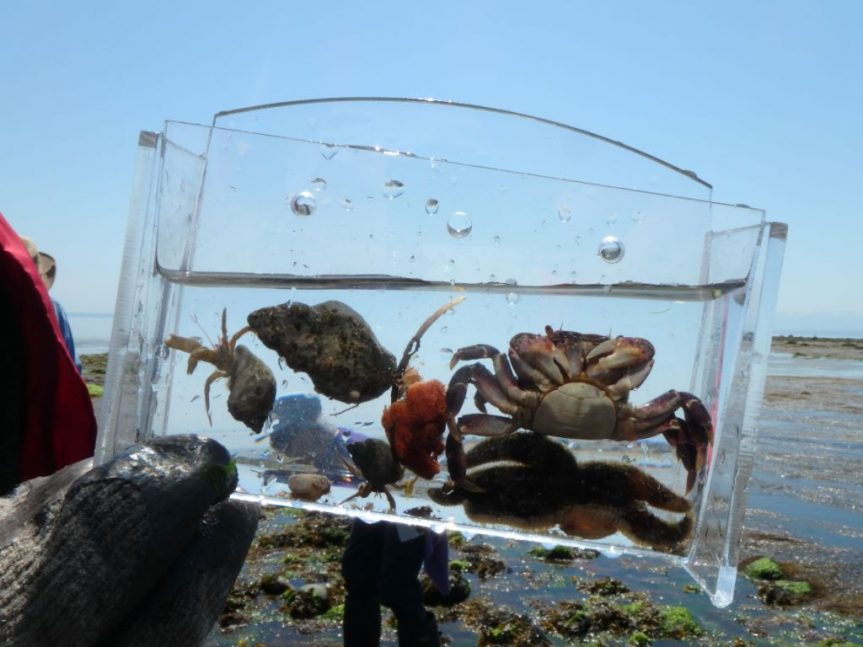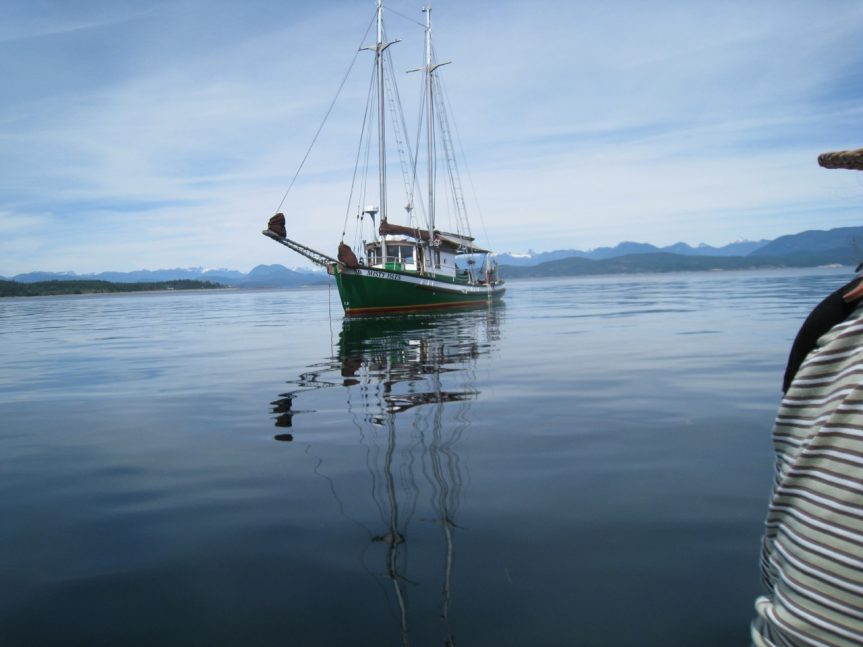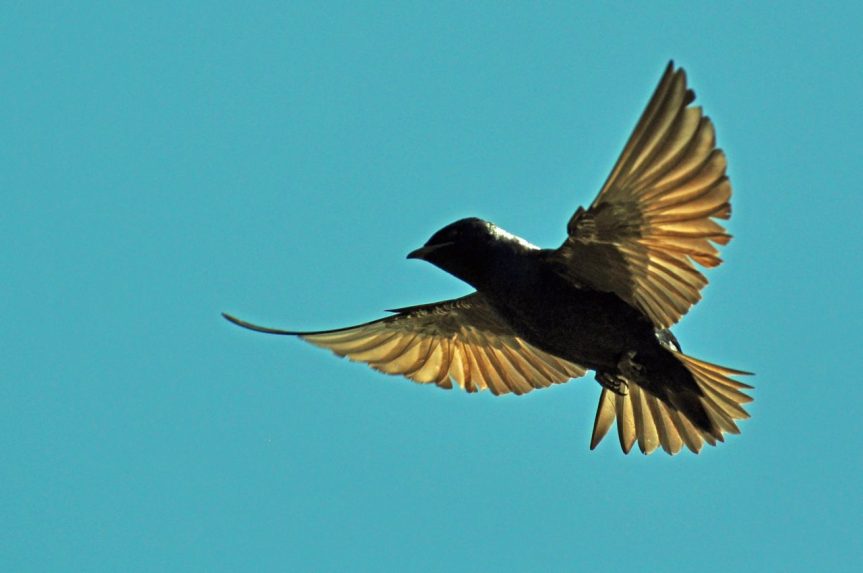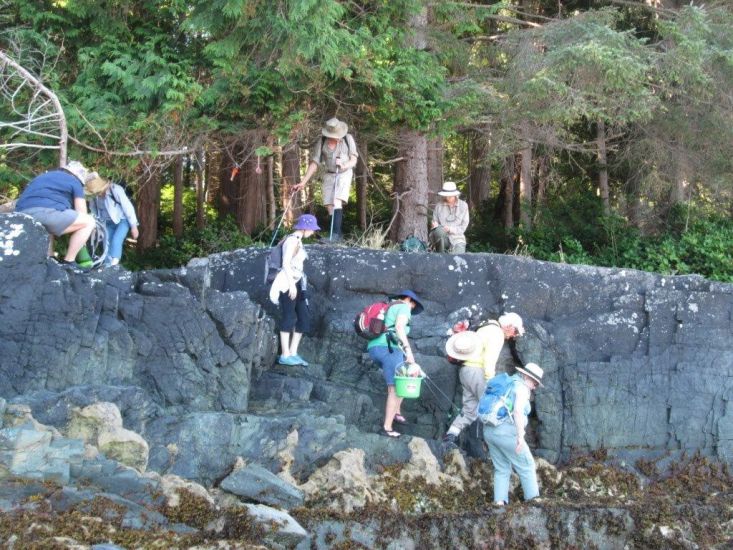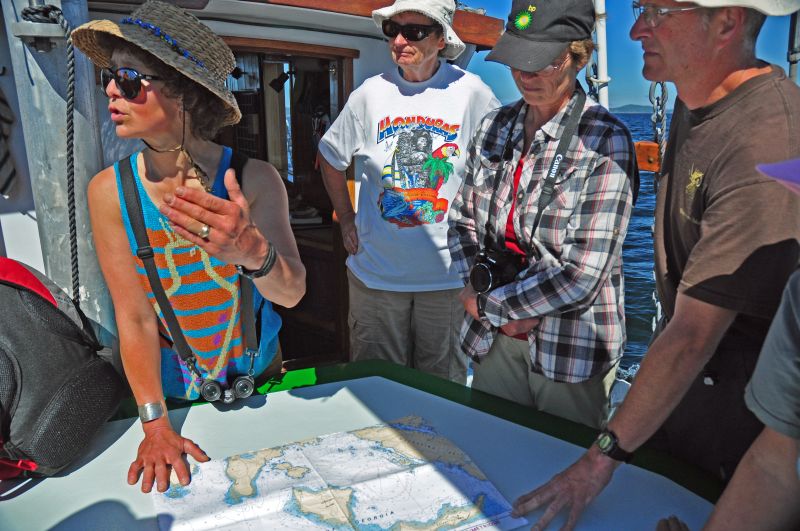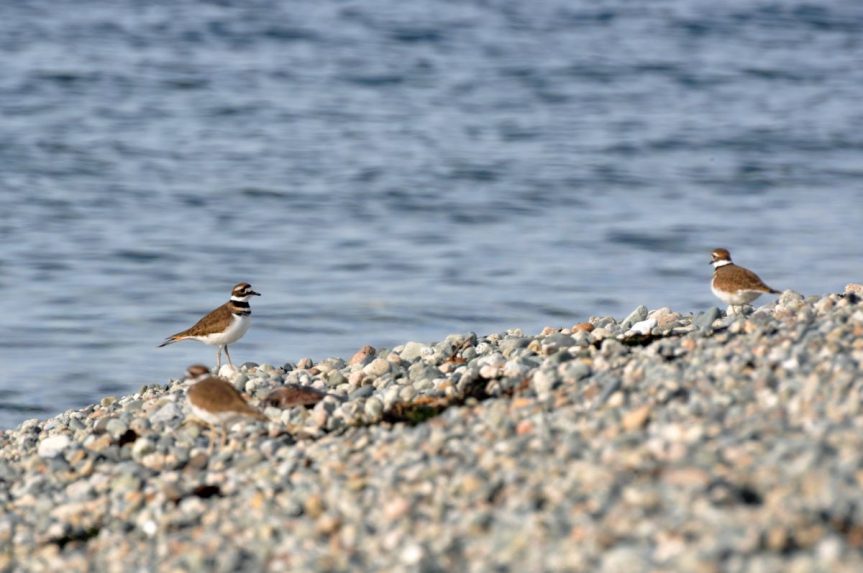
Rick Harbo, Captain Mike Moore and Izi Loveluck aboard the good ship Misty Isles. – L. Hamoline

Crew member Christine and Rick Harbo aboard the Misty Isles. – L. Hamoline

The first group disembarks – L. Hamoline

… followed by a sunflower star – J. Young

Captain Mike found a large leather star – L. Hamoline

Here’s us at the southern tip of Hernando reef – L. Hamoline

We’re “In the Weeds” here. So much colorful vegetation. What a beautiful garden. We’re examining a small dead flounder that was found. – L. Hamoline

This poor flounder has seen better days – L. Hamoline

unidentified seaweeds – J. Young

unidentified seaweeds – L. Hamoline

This is Turkish Towel seaweed – L. Hamoline

This is “heaven-knows what” seaweed – L. Hamoline

Orange finger sponge – L. Hamoline

Reactions were decidedly mixed – L. Young

Mike with a horse clam – L. Hamoline

More unidentified seaweeds – L. Hamoline

We’re apparent a “hands-on” club – L. Young

Midshipman fish eggs. We found quite a few of the males under the rocks guarding the eggs. – L. Young

and a Midshipman! – L. Young

and a Midshipman! – L. Hamoline

Midshipman fish eggs again. The male fish is in the water but difficult to see. – L. Hamoline

We’re still learning our leather stars one at a time – L. Young

And there ARE rewards from getting “out and about” – L. Young

All too soon it was time to treasure the moment… – L. Young

…and head home – L. Young
Hernando Reef with Rick Harbo
by Julia Young, 5 June 2016.
On a calm sunny morning the Misty Isles, captained by Mike, left Lund with 12 passengers. En route to the reef, Mike used his navigational maps to illustrate the uplifting of peaks around us, the carving of deep channels by ice, and the effects of tides, currents and water temperature on the diversity of ecological zones and marine life in the region.
As we closed on to Hernando Reef, the vivid green, waving sea grass, darting fish and scurrying red rock crabs in the shallows under the Zodiac was the start of a fascinating few hours exploring the myriad life on the flat rocky reef, guided by renowned marine biologist Rick Harbo, on a day and time of the year’s lowest tide. Much of the life at the reef’s shoreline was hidden under numerous species of green, red and brown seaweeds, from the prolific invasive Sargassum from Japan to the most delicate and coral-like structures.
As a shell and shellfish specialist, Rick found and identified for us a huge variety of clam, oyster, cockle, snail, limpet and chiton species, ranging from tiny 1 or 2-year old limpets and oysters clinging to shells and rocks to the big horse clams with their huge gaping siphons.
At this lowest of low tides all forms of exposed life are forced to find shelter under seaweed and rocks. Most carefully upturning and then replacing rock after rock, Rick pointed out and described the interdependent life of dozens of shell, crab, sponge, shrimp, slug, fish species akin to complete ecosystems. Of special note for us, were the 4 to 6-inch male “midshipmen” fish guarding the large orange eggs laid by the females on the undersides of small boulders. Some of these same watery nooks were home to literally dozens of animal species of all shapes and sizes, some hardly identifiable by beginners as animals at all. This was an amazingly rich experience for us and we all felt most grateful to Rick for giving his time to us. But we know he enjoyed it too.
As the zodiac returned us back to the boat, we counted fifteen eagles soaring above and sitting on the rocks: their once-a-year feast opportunity. Back on board Christine served iced tea and cookies and Mike, having a little extra time, took the Misty Isles on a detour to point out rock structures where black basalt intruded into the granite cliffs as well as pointing out a petroglyph that long ago was left by First Nations Peoples.
The “Hernando reef trip” is highly recommended and an absolute must for those wanting to know about intertidal life. Thank you to the organizers of this trip and to Misty Isles Captain, Mike Moore and a “very big thank you indeed” to Rick Harbo for sharing his vast knowledge with us. The ocean floor became a new world for us and we realized that this ocean floor nursery of so many creatures is one of the most diverse on our planet.
P.S: Laurette Hamoline also provided a link to a nice six-minute video about the life-history of Midshipman fish, which can be seen here.

